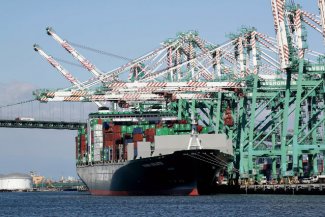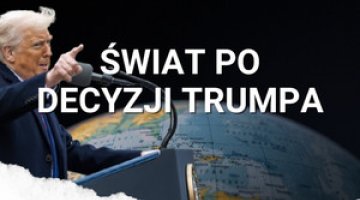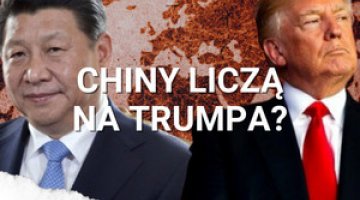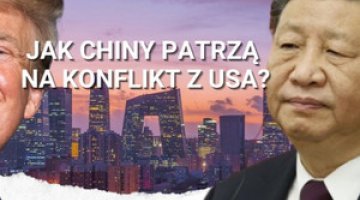The US–China trade dispute: phase two

Donald Trump has pursued his strategy of stepping up pressure on Beijing by threatening it with a tariff war since March 2018. The aim of this strategy is to resolve the problems in US–China economic relations that have been mounting for years. These problems include China’s constant trade surplus with the US, the limitations regarding access to the Chinese market, and the cases of technology theft or forced transfer from US companies. The tariffs imposed so far are of negligible significance for trade exchange, although on 6 July Washington plans to announce a 25% tariff on the import of high-technology goods from China, worth US$34 billion (this amount could be increased to US$50 billion). Should China introduce its announced retaliatory measures, the tariff dispute could cover goods worth around US$95 billion, or around 15% of US–China trade exchange (see Appendix). President Trump has already announced that goods imported from China worth another US$200 billion would be covered by tariffs, should China fail to make concessions.
In contrast to the previous phases of negotiations, the US’s present demands focus on long-term structural problems rather than specific benefits for American business. Thereby, the formula of talks based on seeking spectacular agreements (‘deals’) that Trump had initially adopted is losing ground. This heralds a launch of another phase of negotiations, this time more comprehensive and more difficult for China. Until recently, Beijing had tried to contain the dispute by making minor concessions. At the same time, it is communicating its readiness to offer a symmetrical response to the American strikes. China is also trying to take advantage of its dispute with the US by applying diplomatic measures to position itself as a defender of globalisation and multilateral trade rules. The tools the US is using may disrupt global supply chains in the high-technology sector, which in turn may impact the economic condition of America’s allies in the European Union and in East Asia.
The tariff war as a negotiation strategy
The US’s strategy of increasing pressure on Beijing by threatening it with a tariff war reflects an evolution that has taken place since the beginning of Donald Trump’s presidency. During his 2017 meetings with President Xi Jinping, he offered China an open-dialogue formula which was mainly intended to boost America’s exports to China and open the Chinese market to American-made goods. As a consequence, agreements (mostly non-binding) were signed for the sale of US-made products and services worth US$250 billion, and the so-called 100-Day Action Plan was devised regarding the opening of the Chinese market (for example to American financial institutions). According to the US, the Chinese failed to fully implement the agreements. As a consequence, in March 2018 Trump adopted the tactics of stepping up tensions by threatening a tariff war.
In May 2018, a series of meetings between delegations responsible for resolving the deepening conflict were held. The delegations were headed by Steven Mnuchin, the US Secretary of the Treasury, and Liu He, China’s deputy prime minister for economic affairs. Washington intended to resolve their long-term problems and demanded that China promise to decrease its annual trade surplus with the US by US$200 billion to 2020. On 20 May 2018, China committed itself to boost its import of foodstuffs and energy (including the LNG) from the US, while avoiding quoting any specific figures. According to American negotiators, the threat of a trade war “had been suspended”, which the Chinese side interpreted as the US’s withdrawal from its announced second wave of tariffs, and as a negotiation success for Beijing. A joint statement published after the negotiations made only negligible references to the issue of protecting American technologies, which is of key importance for American big business. On 30 May 2018, Washington announced that it would continue to impose tariffs on Chinese high-technology goods. A detailed list of these tariffs was published on 15 June 2018, and they are to become effective on 6 July. In addition, announcements were made regarding further restrictions on Chinese investments in the US and control of the export of goods containing sensitive technologies to China, which were to be introduced on 30 June. However, on 27 June the US President withdrew from this decision after protests by American business. According to Trump, should there be no response on how to resolve structural problems or should China introduce retaliatory tariffs, the US will impose another 10% tariff on goods worth US$200 billion. China criticised Trump for his unexpected about-turn in the negotiations, withdrew from its purchase declarations, and announced a symmetrical response to the new tariffs (see Appendix).
The negotiation formula adopted by Trump, based on seeking spectacular agreements (‘deals’), has been losing steam. In a tweet on 23 May, Trump himself stated that despite a certain progress in the talks with China, the US will have to “use a different structure” because the formula used so far “will be too hard to get done and to verify results”. In a statement delivered on 29 May 2018, he referred to structural problems in trade relations with China, and stressed that “from now on, we expect trading relationships to be fair and to be reciprocal”. Following the American statements made in late May, the talks with China are now entering a new phase, and are no longer based on seeking spectacular agreements. Instead, they are focused on achieving concessions that could lead to structural changes in trade and investment relations between the two states.
America’s demands regarding the balancing of economic relations …
China’s trade surplus, which has been unchanged for years, results from its domestic economic policy of offering system-wide support for the production sector. This involves maintaining a fixed yuan-US dollar exchange rate and low interest rates for big business, as well as curbing the increase of wages, which it has done for many years. This policy involves offering effective subsidies to the export sector to ensure its global competitive advantage. The surplus dollars earned on exports are invested in the absorbent American capital market to finance the US’s imports from China. In other words, the long-term deficit in the US’s trade with China is financed by way of importing Chinese capital and increasing America’s debt to China. The present economic policy of states that have a regular surplus in their trade with the US (aside from China, these include Germany, Japan and South Korea) is considered unfavourable for the American economy. In the real economy, it results in the US losing its competitive advantage and relocating production abroad, and in finance it triggers reductions of interest rates and the emergence of bubbles on the asset markets (this situation was considered one of the main causes of the 2008 financial crisis). Restoring trade balance between the US and China would require reforms on the Chinese side, a partial cancellation of the system of subsidies for the production sector, and a boost to China’s domestic consumption. Temporary initiatives such as China’s ‘purchase missions’ to the US or imposing tariffs on a portion of its imports are unlikely to resolve the problems of the US’s balance of payments in the long run.
Another aspect of the economic dispute between the US and China involves China’s industrial policy. Beijing supports the development of high technologies and the improvement of Chinese companies’ positions in global value chains (for example under the China 2025 strategy), frequently at the cost of American companies. This is done by subsidising Chinese companies from the high-tech sector, with forced technology transfers from foreign investors being a condition for gaining access to the Chinese market; purchases of American tech companies supported by Chinese state-owned banks; the theft of intellectual property (supported by the Chinese state); violation of patents etc. This affects those sectors that are of key importance for long-term competitiveness of American industry and services, including artificial intelligence, big data, robotics, biotechnology, aviation and space technologies. Reducing the technological gap between China and the US in these sectors is viewed as a threat to the American economy’s competitive advantage in the long run, as well as a challenge to the technological advantage of the US military.
At the present stage of talks, the US is demanding that China creates ‘equal rules of the game’ for companies from the two states; that it opens the Chinese market for American investors (including in the financial sector); stops the practice of technology theft or forced transfer; and suspends the subsidies for technology companies offered under the China 2025 programme. Aside from instruments connected with additional tariffs, the Trump administration is developing alternative measures to put pressure on Beijing. The technology security issues have been directly linked to trade issues, for example by launching a mechanism stipulated in Section 301 of the Trade Act of 1974 (see Appendix). In addition, talks relating to other vital issues for China (such as the denuclearisation of North Korea) have been linked to trade talks. The US has significantly expanded its mechanisms for blocking China’s direct investments in America. During the spring round of talks, the American administration stopped (President Trump allegedly did not know about it) the supplies of key components (processors) to China’s biggest telecommunications company ZTE, forcing it to suspend its operations for some time. Non-tariff measures to put pressure on China, such as blocking Chinese investments in the US (as well as America’s allies, for example blocking the takeover of the German company Aixtron in 2016 following suggestions from the CIA) and placing an embargo on the export of components for selected companies (the case of ZTE), make it possible to target Chinese companies in a more precise manner.
…and Beijing’s attempt at de-escalation
China’s negotiation strategy involves offering symmetrical responses to the American threats regarding increased tariffs (see Appendix). Alongside this, Beijing is also making smaller concessions to please Donald Trump, by placing media attention on his spectacular ‘deals’, and to influence him personally (for example by supporting Ivanka Trump’s businesses in China). Examples of this include China’s announcement that it would lower the tariffs on the import of cars from the US, which was offered in response to President Trump’s tweet criticising unequal access to the Chinese market in this sector, as well as its plans to increase its purchases of foodstuffs and energy from the US (which are being partly implemented under agreements made in 2017). The meeting in Washington in May 2018, which resulted in a temporary de-escalation, was described by the Chinese media as a success, which postponed the threat of a trade war and at the same time helped Beijing avoid making concessions to the US in matters of vital importance to China. Alongside this, Beijing is trying to present its domestic economic reform agenda (involving China becoming more open to the world) as a declaration of goodwill towards the US. While the need to gradually increase domestic consumption (which is a response to domestic challenges, but will at the same time help balance the trade exchange) is indeed one of Chinese government’s priorities, it is unlikely China will abandon its key technology development programme known as China 2025. This is why the concessions Beijing has made so far may be viewed as the implementation of measures that had long been planned, or are of lesser importance from the point of view of China’s long-term economic development strategies.
Beijing is trying to use its dispute with the US to position itself as a defender of globalisation, in contrast to the policy pursued by the US, which is referred to as unpredictable and protectionist. In its conflict with Washington, Beijing is posing as a peace-loving side that is only ready to launch an aggressive policy when the US starts a trade war. This fits in with China’s wider strategy, which was announced by Xi Jinping during his speech in Davos in 2017 and has been pursued since the beginning of Donald Trump’s presidency. Beijing is pursuing a policy of gradually lowering tariffs on the import of consumer goods, which partly results from domestic needs, but is being used to stress China’s economic openness. The global imports fair which is to take place in Shanghai in November 2018 will be a major political event attended by delegations from more than 100 countries (including heads of state) as well as representatives of key international organisations (such as the World Trade Organisation and the United Nations). China’s dispute with the US is also being accompanied by increased diplomatic activity, for example in the EU and in Japan, connected with a proposed joint response to the US’s challenge to the existing multilateral trade rules. For example, China has declared its will to maintain the World Trade Organisation regime and cooperate with European institutions in this respect.
The consequences for the global economy
It is uncertain whether Trump will actually implement these aggressive negotiation strategies, including the potential introduction on punitive tariffs on Chinese high-tech goods (see Appendix). Trump’s situation is complicated by China’s current position in global value chains, in particular in advanced technology sectors (threatened by the US’s import tariffs). Chinese industrial plants produce computers, electronic and telecommunications devices for all major global producers. According to PIIE’s estimates, as much as 80% of products potentially covered by the tariffs are manufactured in China by non-Chinese companies, including companies from the US (for example products made for Apple and nVidia), Japan, Germany, South Korea and Taiwan. The tariffs may also impact the export of components from these countries to China. According to groups in the US which oppose Trump’s protectionist agenda, if the tariffs are imposed, this will compromise American tech companies’ competitive advantage (because they will lose access to their production base in China), and destabilise the economies of America’s allies in East Asia. This narrative has been supported by a portion of American businesses operating in China, for example Apple’s CEO Tim Cook. Opinions regarding the double-edged nature of the solutions proposed by Trump and the threat of destabilisation of global value chains are also being voiced in China. Some commentators and high-tech producers claim that the potential losses to the economies of the US and of its allies would be too big, and that Trump was bluffing when he formulated his threats, which are very unlikely to be put into practice. However, the beginning of July 2018 saw a series of declines on Chinese stock markets followed by a major weakening of the yuan, which triggered an intervention by the Chinese currency regulator. The financial markets’ nervous reaction indicates that the scenario involving imposing tariffs on Chinese high-technology products is realistic and likely.
The US’s increased pressure on Beijing may prove to be favourable from the point of view of the EU. Reducing China’s trade surplus, countering China’s industrial espionage and direct investments intended to take over technologies, as well as opening up the Chinese market, are all in the EU’s current agenda. This creates a potential for cooperation with the American administration. On the other hand, the instruments used by Trump pose a number of threats to the EU. Introduction of tariffs on high-technology products may threaten the export to the US of goods manufactured in European-owned industrial plants located in China (such as German cars), and may have a negative impact on the use of components manufactured in Europe in these plants. Moreover, Trump’s strategy involving bilateral negotiations and the introduction of tariffs applied outside the World Trade Organisation (WTO) regime challenges the existing global rules rules for resolving trade tensions, which may impact the condition of European companies on third markets. Whether these trends are continued will depend on the US’s further actions. If Trump’s strategy, which is based on bilateral dialogue and protectionist instruments, does not prove successful, the US may return to putting pressure on China by way of multilateral regional trade agreements such as TPP and TTIP (which are intended, among other things, to set global production standards that China would have to obey).
Appendix
The trade dispute between the US and China was aggravated in the spring of 2018, when on 23 March the US imposed tariffs on the import of steel and aluminium (excluding selected states, for example NAFTA members, and the EU for some time). From China’s perspective, this has had limited consequences: in 2017 China supplied a mere 6% of America’s imports in these categories of goods. Moreover, around 90% of America’s steel import from China had already been covered by anti-dumping tariffs under WTO procedures. According to PIIE estimates, the tariffs imposed in March 2018 will cover China’s exports worth around US$2.8 billion. On 2 April 2018, China announced that it would introduce retaliatory tariffs on American aluminium, pork and fruit, in total covering around US$2.5 billion of US exports. Aside from the tariffs on solar panels and washing machines imposed in January 2018, these have been the only tariffs introduced in connection with Trump’s 2018 trade offensive. Their impact on US/China trade exchange is negligible (in total they cover goods worth around US$5.3 billion, out of US$636 billion of total trade exchange).
On 3 April 2018, the US announced a list of 1333 products imported from China that are to be covered by a 25% punitive tariff. The list was compiled following analyses carried out pursuant to Section 301 of the US Trade Act of 1974, which makes it possible to impose punitive tariffs on trade partners that violate intellectual property laws. The tariff is to cover high-technology products including computers, electronic devices, machines, transportation equipment. According to PIIE estimates, the tariffs may cover goods worth around US$46 billion. In response to this move, on 4 April China threatened to impose a 25% tariff on 106 main categories of goods imported from the US, including in the agricultural and food processing sector (for example soybeans, cereals, beef, fruit, tobacco), the automotive sector (combustion-engine cars and electric cars), as well as chemical and aviation sectors. On 15 June, the US announced that on 6 July it will impose tariffs to cover imports worth US$34 billion. On 13 July, a decision is expected regarding the expansion of the list of tariffs to include goods worth US$16 billion, to be imposed in August 2018. Based on data from 2017, China’s retaliatory tariffs could cover American exports worth US$49.8 billion. The Chinese tariffs are targeted at those sectors of the American economy that concentrate in regions where Trump’s approval rating is relatively high (foodstuff production in the Midwestern states). Should these tariffs be imposed by both sides, the limitations would cover around 15% of bilateral trade. In response to China’s retorts, Trump threatened to expand the list further to include goods worth US$100 billion (while not naming any specific categories), and later increased this figure to US$200 billion.




